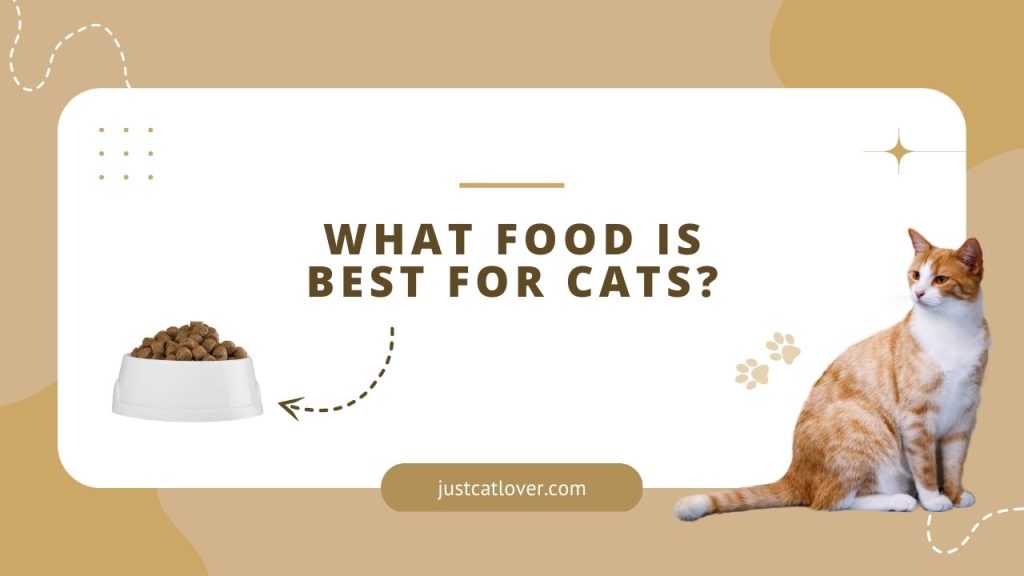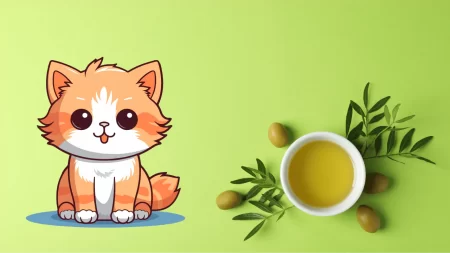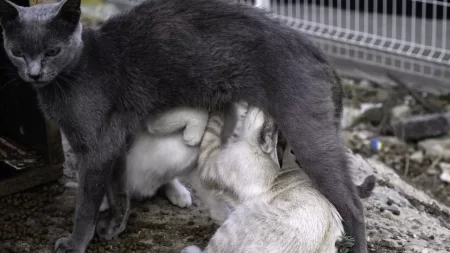Feeding cats the correct food is key to good health. What you give them has a huge effect on their energy, well-being, and resistance against illness. You should know what type of food is good for cats.
Cats are carnivores and need animal proteins in order to function. Animal proteins have essential amino acids that cats can’t make. Most cat food has animal proteins and plant proteins like corn or soy.
Choose food that has a balance of proteins, carbs, and fats. The protein should be more than 28%. Also, look for food with 5-20% fat. Also, vitamins and minerals like taurine and vitamin A. Canned food have more moisture. But, some cats prefer dry kibble.
Select food specifically made for cats. Don’t give them human food like milk or fish. It can lead to being overweight or malnutrition. Look for “complete nutrition” and “no artificial preservatives”. Ask your vet for help if you are unsure.
Nutritional Needs
Cats have different nutritional requirements, dependent on age, lifestyle, health, and many other factors. To stay fit and energetic, all cats should have certain dietary essentials.
Let’s look at the basics of kitty nutrition, and which food is most suitable!
Protein
Cats need more protein than dogs. This should come from animal sources like meat and fish. Certain plants can provide adequate protein too when combined with other ingredients. Cats need 10-12% of calories to come from protein each day.
- Animal proteins like muscle meats, eggs, dairy, and organs contain all nine essential amino acids.
- Plant-based proteins should be paired with other ingredients for a complete set of essential amino acids. Grains, legumes, and nuts are good sources of plant proteins.
When selecting food for your cat, aim for a balance of animal and plant-based proteins. Variety is key to providing nutritional needs for your cat!
Fats
Fats are required in a cat’s diet. They provide energy and help with healthy skin and fur. Fats are split up into fatty acids – which cats need for their metabolism. Cats usually like certain types of fats. So, it’s important to give them food that has the right balance of fatty acids.
Some of these acids are linoleic acid, arachidonic acid, and gamma-linolenic acid.
It is suggested that cats consume foods with 10% fat or less (on a dry matter basis). Wet food usually contains higher fat than dry food. Yet, wet food also has more water. This means it is lower in calories. So, wet cat food helps to add extra moisture to the diet, whilst still having enough fat.
Vitamins and Minerals
Cats need various vitamins and minerals to stay healthy. Some of these can be found in their diet, however, the best way to get them is through balanced cat food. The important vitamins and minerals cats need include Vitamins A, B Vitamins, Vitamin C, Vitamin D, Folic Acid, Iron, Zinc, Selenium, and Potassium.
- Vitamin A strengthens the immune system and boosts vision.
- The B vitamins—thiamine (B1), riboflavin (B2), niacin (B3), and pantothenic acid (B5)—help with energy metabolism.
- Vitamin C supports skin and coat health.
- Vitamin D helps absorb and use calcium, and Folic Acid helps with cell growth.
- Iron creates red blood cells and antibodies.
- Zinc aids with digestion and Selenium help cell membranes.
- Potassium helps the heart muscle and transmits nerve impulses.
Quality cat food should contain Calcium Carbonate for essential minerals such as phosphorus, sodium chloride, and potassium citrate. It also needs added supplements like l-ascorbyl-2-polyphosphate (Vitamin C) or Niacinamide (Vitamin B3). Food that meets the daily values ensures cats get the right amount of vitamins and minerals for good health.
Types of Cat Food
Cats must have a balanced diet for top health. So, it’s essential to make sure your kitty is consuming the correct food. There are a lot of food types to select from, from dry food to canned food. In this piece, we’ll examine the different types of cat food and the advantages and drawbacks of each:
- Dry food
- Canned food
Wet food
Cats are obligate carnivores – they need to eat animal-derived food to stay healthy. Wet food can be a great choice. It is usually composed of fat and protein from animal sources plus other nutrients. Canned wet food is convenient and easy to feed.
Pouch and packet foods contain chunks or slices of meat in jelly-like substance, with fewer calories and the same nutrition as other wet food types.
Gravy-based foods have a thicker texture, often flavored with fruits, mushrooms, or fish sauce. But read labels carefully – some products contain lower-quality proteins, like by-products. These don’t provide adequate nutrition for cats.
Dry food
Choose a food that is nutritionally balanced and complete to feed your cat. Dry food is a popular choice. The quality of dry food has improved; you can find lots of high-quality dry food.
Premium dry cat food often has proteins, carbs, fats, vitamins, minerals, and taurine. Unlike cheaper foods, premium brands avoid fillers like corn and wheat. They also have fewer preservatives and artificial colors/flavors.
Read the label before buying. Look for real meat or fish instead of by-products or meals. The label will tell the daily feeding allowance and how to transition gradually from one food to another over 10-14 days.
Raw food
Raw cat food is gaining popularity as an alternative to processed diets. It usually contains raw meats, organs, bones, eggs, fruits, and veggies. This diet mimics what cats eat in the wild and maybe more nutritious than processed food.
Before choosing this diet, you should research potential benefits and risks. Many vets don’t recommend raw food due to the risk of bacteria like Salmonella or Listeria. Bones can also be a choking hazard or cause intestinal damage if not prepared or monitored correctly.
Raw cat food ingredients include:
- Raw meats (e.g. chicken, fish, beef)
- Organ meat (e.g. heart, liver)
- Raw eggs (including the shell for calcium)
- Fruits (blueberries, apples, in small amounts)
- Vegetables (broccoli, spinach, squash)
- Bone meal (ground finely to avoid choking)
Benefits of Homemade Cat Food
Providing homemade cat food has lots of advantages, making it the best choice for a healthy feline diet. Homemade cat food has vital vitamins, minerals, proteins, and fats that are necessary for cats’ health. You can also customize the food for your pet’s individual needs, like allergies or diabetes.
When choosing ingredients, think about what experts recommend for cats. Proteins, carbohydrates, fats, and moisture should be balanced. Experts also suggest adding fish twice a week because it has Omega-3. This helps with skin health and immunity.
Proteins can be lean beef, chicken breasts, and legumes. Complex carbs come from grains, dark green veggies, dairy, eggs, and fruits. An occasional piece of raw liver or fish, as well as raw organ meat, provides essential vitamins.
Mix and match ingredients to make balanced meals like cottage cheese/veggie combos, egg/rice dishes, beef/rice dishes, and tuna/lentil mixtures. However, check the amounts before feeding to avoid any health issues.
Tips for Choosing the Right Cat Food
Cats need a balanced diet, just like us humans! When it comes to finding the perfect cat food for your pet, it is vital to consider their nutritional needs. There are tons of different brands and types of cat food out there, so making the right choice can be daunting!
Here are some tips to help you choose the right cat food for your furry friend:
Read the Label
It’s easy to feel overwhelmed when picking the right cat food. Too many brands and varieties! The best way to narrow it down is to read every label.
Look for an AAFCO (Association of American Feed Control Officials) statement. This guarantees all essential nutrients in the right proportions.
- For wet food, make sure it contains at least 10% moisture and is labeled “complete and balanced“. Avoid artificial preservatives.
- For dry food, check for meat, fish or poultry meal first. This indicates higher-quality proteins.
- Formulas exist for different ages, activity levels, and health needs. Look for natural ingredients and avoid antibiotics or hormones.
- Also, avoid grains like corn and wheat as cats can’t digest them. Opt for veggies like carrots, spinach, and peas instead.
- Finally, buy products from reputable companies that safety tests their finished products.
Consider Your Cat’s Age and Health
When choosing the proper cat food, consider your pet’s age, size, lifestyle, and any health conditions. Not all types of food are suitable for each kitty, so it’s important to pick the most suitable option.
- Kittens (up to 1 year old): Growing kittens need different nutrition than adults. Their diet must have a lot of protein, fat, and essential vitamins and minerals for healthy development. Choose a balanced kitten food with high animal proteins (like chicken or salmon) and carbs (like rice or oats). Avoid high sodium levels – opt for lower salt foods, such as “kitten.”
- Adult cats (1-10 years old): Adult cats must eat a balanced diet with the right amount of vitamins and minerals. Needs can vary depending on activity level, environment, health issues, or weight. Look for “complete” or “balanced” foods. Avoid fillers like corn oil, which can be dangerous if cats eat a lot.
- Senior cats (over 10 years old): As cats age, their dietary needs can change due to medical issues or slower metabolism. Senior diets have more fiber. Low-fat options with natural ingredients like tuna, turkey breast, or duck leg – add nutrition and taste appeal. If your senior pet has health concerns, consult a vet about specific dietary needs. This includes wet food that’s easier on toothless gums, and appetite stimulants when needed.
Choose High-Quality Ingredients
When selecting food for your cat, quality matters. Opt for natural, minimally processed ingredients. Natural proteins such as chicken and turkey should be the main ingredients. These will provide essential amino acids for muscle development. Avoid low-grade meats, as these may contain contaminants.
Include whole grains, vegetables, fruits, and healthy fats like coconut or canola oil. Watch out for food additives like colorings and preservatives. Large doses, if fed consistently, could be bad for your cat.
Conclusion
When it comes to picking the right food for cats, you should consider their individual needs and likes. Single-cat households have more options. Multi-cat households need to figure out a blend that suits each one.
Dry food is cheap and can provide all the nutrition. To make it more interesting, canned food is a great way to give more protein and moisture. You can even move to raw foods for extra nutrition, but you’ll have to be careful when preparing them. Meaty bones or snacks are nice treats. But, don’t give too many or your pet will get fat!
In conclusion, there are many options available to cater to your cat’s needs. A vet or pet store expert can help you decide what’s best for your furry friend.







